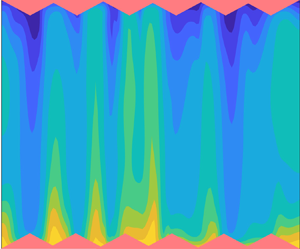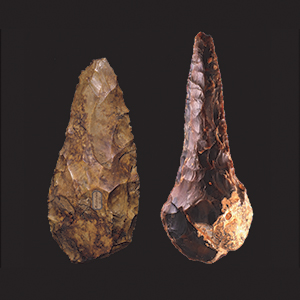Refine listing
Actions for selected content:
1416829 results in Open Access
DUALITY FOR COALGEBRAS FOR VIETORIS AND MONADICITY
- Part of
-
- Journal:
- The Journal of Symbolic Logic / Volume 90 / Issue 3 / September 2025
- Published online by Cambridge University Press:
- 04 March 2024, pp. 1022-1055
- Print publication:
- September 2025
-
- Article
-
- You have access
- Open access
- HTML
- Export citation
Justice Isn’t Blind: Attorney Attractiveness and Success in US Federal Court
-
- Journal:
- Journal of Law and Courts / Volume 12 / Issue 2 / October 2024
- Published online by Cambridge University Press:
- 04 March 2024, pp. 413-434
-
- Article
- Export citation
Morpho-phenological characterization and genetic analysis of dolichos bean germplasm from Uttar Pradesh, India
-
- Journal:
- Plant Genetic Resources / Volume 22 / Issue 3 / June 2024
- Published online by Cambridge University Press:
- 04 March 2024, pp. 133-142
-
- Article
- Export citation
Promoting standardisation in modern China: British and American engineers’ organisations, local Chinese engineers, and their transnational networks, 1901–41
-
- Journal:
- Journal of the Royal Asiatic Society / Volume 34 / Issue 3 / July 2024
- Published online by Cambridge University Press:
- 04 March 2024, pp. 573-589
- Print publication:
- July 2024
-
- Article
- Export citation
JOKING IN GREEK COMEDY - (N.) Scott Jokes in Greek Comedy. From Puns to Poetics. Pp. x + 181. London and New York: Bloomsbury Academic, 2023. Cased, £85, US$115. ISBN: 978-1-350-24848-9.
-
- Journal:
- The Classical Review / Volume 74 / Issue 2 / October 2024
- Published online by Cambridge University Press:
- 04 March 2024, pp. 404-406
- Print publication:
- October 2024
-
- Article
- Export citation
Log Calabi–Yau surfaces and Jeffrey–Kirwan residues
- Part of
-
- Journal:
- Mathematical Proceedings of the Cambridge Philosophical Society / Volume 176 / Issue 3 / May 2024
- Published online by Cambridge University Press:
- 04 March 2024, pp. 547-592
- Print publication:
- May 2024
-
- Article
- Export citation
Reconciling Hegel with the Dialectic: On Islam and the Fate of Muslims in Hegel's Philosophy of History
-
- Journal:
- Hegel Bulletin / Volume 45 / Issue 1 / April 2024
- Published online by Cambridge University Press:
- 04 March 2024, pp. 93-119
- Print publication:
- April 2024
-
- Article
-
- You have access
- Open access
- HTML
- Export citation
Regimes in rotating Rayleigh–Bénard convection over rough boundaries
-
- Journal:
- Journal of Fluid Mechanics / Volume 982 / 10 March 2024
- Published online by Cambridge University Press:
- 04 March 2024, A15
-
- Article
- Export citation
ARISTOTLE ON PLATO - (A.) Ferro Aristotle on Self-Motion. The Criticism of Plato in De Anima and Physics VIII. (Philosophical Studies in Ancient Thought 1.) Pp. 463. Basel: Schwabe, 2022. Cased, CHF78. ISBN: 978-3-7965-4163-6.
-
- Journal:
- The Classical Review / Volume 74 / Issue 2 / October 2024
- Published online by Cambridge University Press:
- 04 March 2024, pp. 413-415
- Print publication:
- October 2024
-
- Article
- Export citation
POMPEY'S APULIAN ESTATES
-
- Journal:
- Papers of the British School at Rome / Volume 92 / October 2024
- Published online by Cambridge University Press:
- 04 March 2024, pp. 55-85
- Print publication:
- October 2024
-
- Article
- Export citation
ECOCRITICAL PERSPECTIVES ON OVID - (F.) Martelli, (G.) Sissa (edd.) Ovid's Metamorphoses and the Environmental Imagination. Pp. xii + 250, ills. London and New York: Bloomsbury Academic, 2023. Cased, £85, US$115. ISBN: 978-1-350-26894-4.
-
- Journal:
- The Classical Review / Volume 74 / Issue 2 / October 2024
- Published online by Cambridge University Press:
- 04 March 2024, pp. 475-478
- Print publication:
- October 2024
-
- Article
- Export citation
Frequency reconfigurable circular microstrip G-slotted antenna with DGS for various wireless applications
-
- Journal:
- International Journal of Microwave and Wireless Technologies / Volume 16 / Issue 3 / April 2024
- Published online by Cambridge University Press:
- 04 March 2024, pp. 505-514
-
- Article
- Export citation
Amy E. Marga. In the Image of Her: Recovering Motherhood in the Christian Tradition (Waco, TX: Baylor University Press, 2022), pp. xi + 195. $42.99
-
- Journal:
- Scottish Journal of Theology / Volume 77 / Issue 2 / May 2024
- Published online by Cambridge University Press:
- 04 March 2024, pp. 201-202
- Print publication:
- May 2024
-
- Article
- Export citation
Big enough to matter: on the frequency and chronology of giant handaxes in the British Lower Palaeolithic
-
- Article
-
- You have access
- Open access
- HTML
- Export citation
The Production and Distribution of Mimbres Pottery. Darrell G. Creel. 2022. University of New Mexico Press, Albuquerque. v + 279 pp. $85.00 (hardcover), ISBN 978-0-8263-6397-8. $85.00 (e-book), ISBN 978-0-8263-6398-5.
-
- Journal:
- American Antiquity / Volume 89 / Issue 2 / April 2024
- Published online by Cambridge University Press:
- 04 March 2024, pp. 330-331
- Print publication:
- April 2024
-
- Article
- Export citation
FabricFolding: learning efficient fabric folding without expert demonstrations
-
- Article
-
- You have access
- HTML
- Export citation
The Isfahan Anthology Project
-
- Journal:
- Iranian Studies / Volume 57 / Issue 2 / April 2024
- Published online by Cambridge University Press:
- 04 March 2024, pp. 295-302
- Print publication:
- April 2024
-
- Article
-
- You have access
- Open access
- HTML
- Export citation
ENERGY BOUNDS FOR MODULAR ROOTS AND THEIR APPLICATIONS
- Part of
-
- Journal:
- Journal of the Institute of Mathematics of Jussieu / Volume 24 / Issue 5 / September 2025
- Published online by Cambridge University Press:
- 04 March 2024, pp. 1765-1806
- Print publication:
- September 2025
-
- Article
-
- You have access
- Open access
- HTML
- Export citation
Moments of the central L-values of the Asai lifts
- Part of
-
- Journal:
- Canadian Mathematical Bulletin / Volume 67 / Issue 3 / September 2024
- Published online by Cambridge University Press:
- 04 March 2024, pp. 796-804
- Print publication:
- September 2024
-
- Article
- Export citation
Invariant measures of Toeplitz subshifts on non-amenable groups
- Part of
-
- Journal:
- Ergodic Theory and Dynamical Systems / Volume 44 / Issue 11 / November 2024
- Published online by Cambridge University Press:
- 04 March 2024, pp. 3186-3215
- Print publication:
- November 2024
-
- Article
-
- You have access
- Open access
- HTML
- Export citation



















